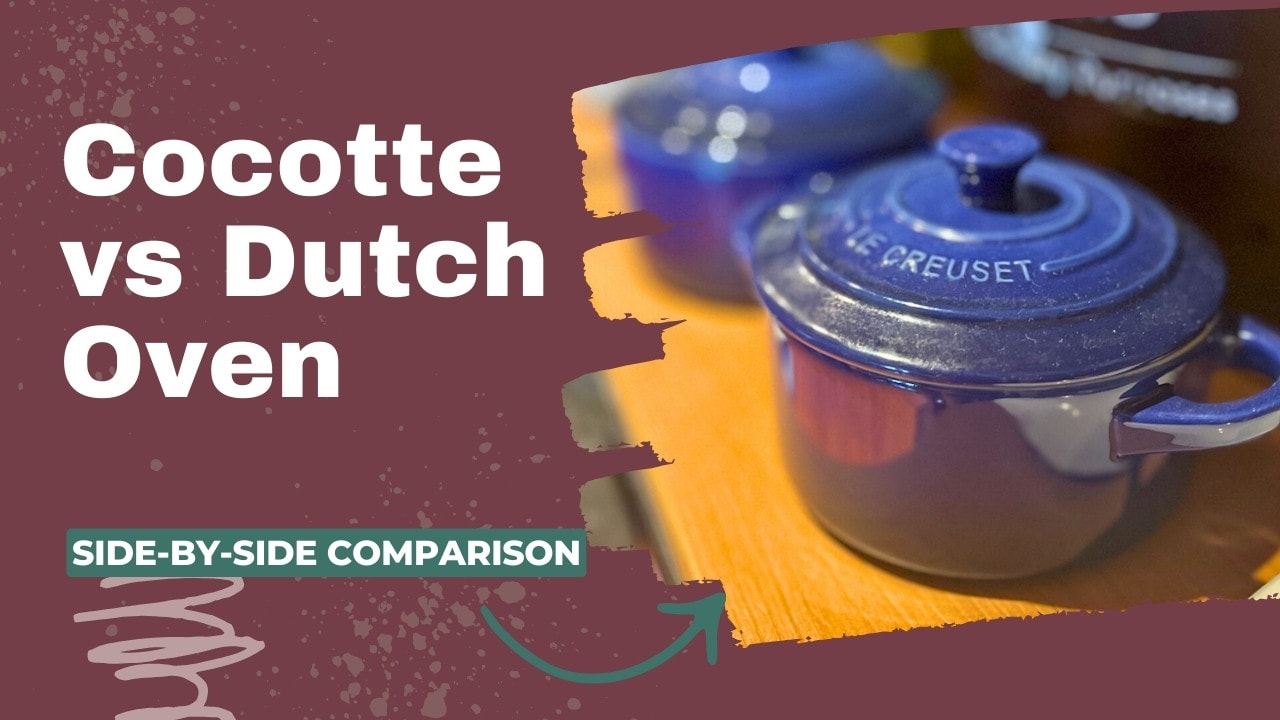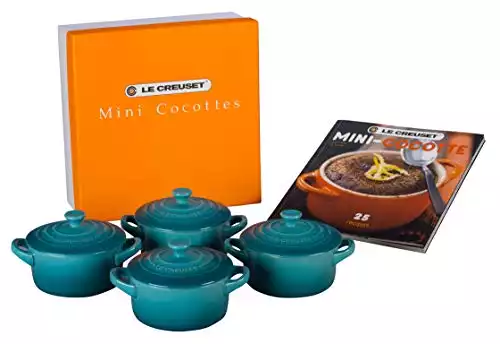My love for Dutch ovens is no secret! My cast iron Dutch oven is the workhorse of my kitchen, never letting me down for any cooking adventures. From baking a shortbread to searing the perfect steak, it never fails to stun me.
But if you’re like me, you may confuse Dutch ovens with cocottes, another cooking vessel originating from Europe. They may not have huge differences, hence the confusion. But some features can help you tell them apart.
Let’s explore these differences.
What’s the Difference Between a Dutch Oven and a Cocotte?
The Cocotte and Dutch oven are two very similar cooking vessels that are commonly used interchangeably. While the differences are not clearly defined, a cocotte can typically be smaller than a Dutch oven, which is used for preparing one-pot dishes for larger numbers of people. A Cocotte, like the one made by Staub, may have a flat lid, while a Dutch oven may have a flat or domed lid.
Here’s a rundown of the differences between a cocotte and a Dutch oven.
| Cocotte | Dutch oven | |
|---|---|---|
| Material | Raw and enameled cast iron Stoneware | Raw and enameled cast iron Stainless steel Ceramic |
| Size | Smaller (2.5-3.5 qt) | Larger (7-8 qt) |
| Common Uses | ✅ Low and slow cooking ✅ Braising ✅ Frying ✅ Baking ✅ Boiling | ✅ Low and slow cooking ✅ Browning ✅ Braising ✅ Frying ✅ Searing ✅ Baking ✅ Boiling |
| Shape | Round Oval | Round Oval |
What Is a Cocotte?
Cocotte is a French word, meaning casserole; it’s a wide, deep cooking dish suitable for oven cooking. That’s why it’s also called a French oven, as well.
American “casserole dishes” of today aren’t 100% the same as French cocottes, though. They’re available in a wide range of materials, including glass, cast iron, and ceramic. Plus, casserole dishes come in different shapes and sizes, such as rectangular, circular, and oval. Not all casserole dishes come with lids.
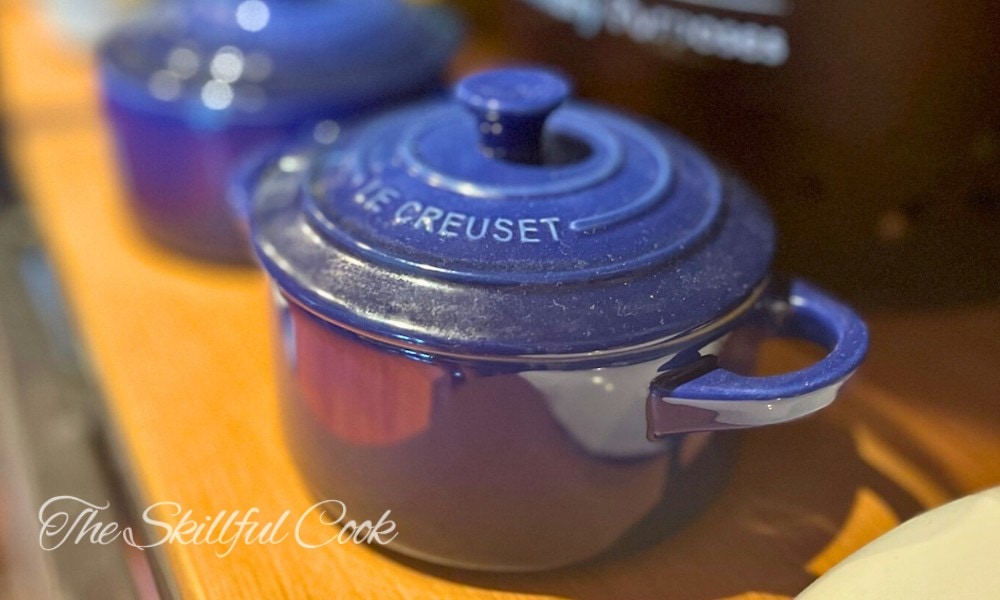
What Is a Dutch Oven?
A Dutch oven is a heavy cooking vessel that looks very much like a cocotte. It’s deep, wide, and circular, suitable for slow cooking. It has a tight-fitting lid and wide handles on both sides.
The history of Dutch ovens can be traced back to the 18th century. The Dutch likely were the first to make heavy and long-lasting pots by pouring melted cast iron into sand molds, and Dutch traders carried them throughout the world. Heavy iron pots known as “Dutch ovens” were used by American settlers, since it was a strong material that would hold up to long journeys through deserts and mountains.
Cocotte vs. Dutch Oven
So, a cocotte and a Dutch oven can be so similar that the terms can be used interchangeably. There are no major differences between the two; the name for the pot varies by region. But there are some subtle differences in the way a cocotte vs a Dutch oven is typically made.
Shape
Both cocottes and Dutch ovens come in oblong and circular shapes. A French cocotte, such as the Le Creuset Chef’s oven, may have curved sides, reducing the surface area of the bottom of the pot. On the other hand, a Dutch oven has straight walls, giving it a taller and deeper look. (Though, I should say, Staub’s famous cocotte has straight walls.)
Both Staub and Le Creuset make cocottes in whimsical shapes, like tomatoes or pumpkins! I guess you could say that cocottes can be more decorative, while Dutch ovens are often more functional. (But then, we don’t want to forget the brightly painted Great Jones Dutch ovens!)
Handles
Both have handles on either side, but a traditional cast iron Dutch oven can have a looped handle over the vessel. This handle makes it easy to hang the Dutch oven over an open fire. But a Dutch oven’s handles that are on its sides are typically longer than a cocotte’s handles.
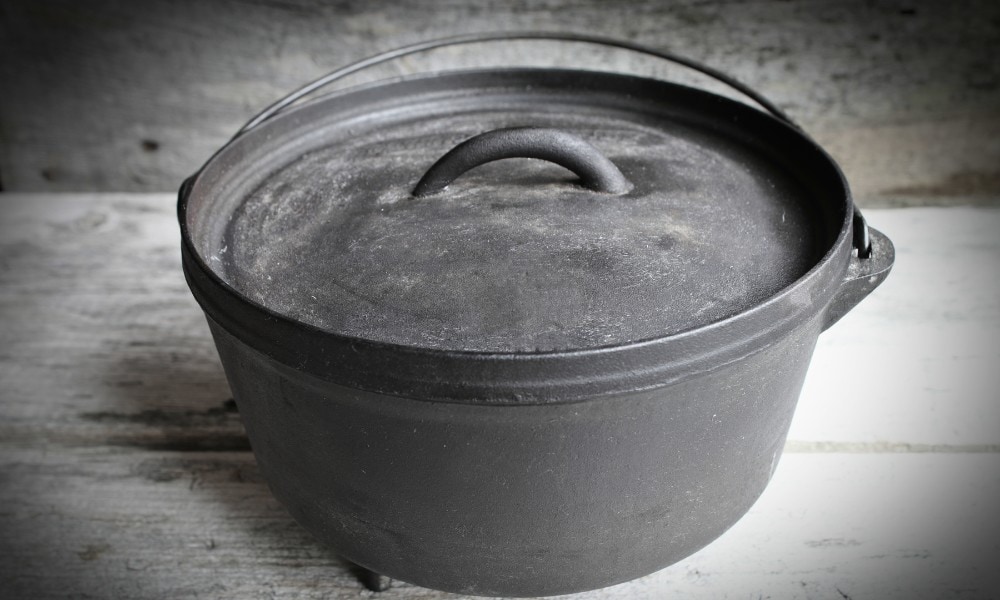
Size
Another difference between a Dutch oven and a cocotte is the size range. A cocotte may be smaller than a Dutch oven, although both can come in a wide range of sizes.
A cocotte is typically 1.5 quarts to 7 quarts in capacity, while a Dutch oven ranges from 5.5 to 12 quarts and up.
Lid
One of the main differences between a cocotte and a Dutch oven is the lid design. Both have heavy, tight-fitting lids to trap steam inside and deliver a heartier stock. But many Dutch ovens have a domed lid shape, fitting its cooking applications (more on that later).
A cocotte —especially the ones made by Staub— has a flat lid with spikes on the interior side, making it easier for the evaporated water to drip back into the dish and preventing it from losing its moisture.
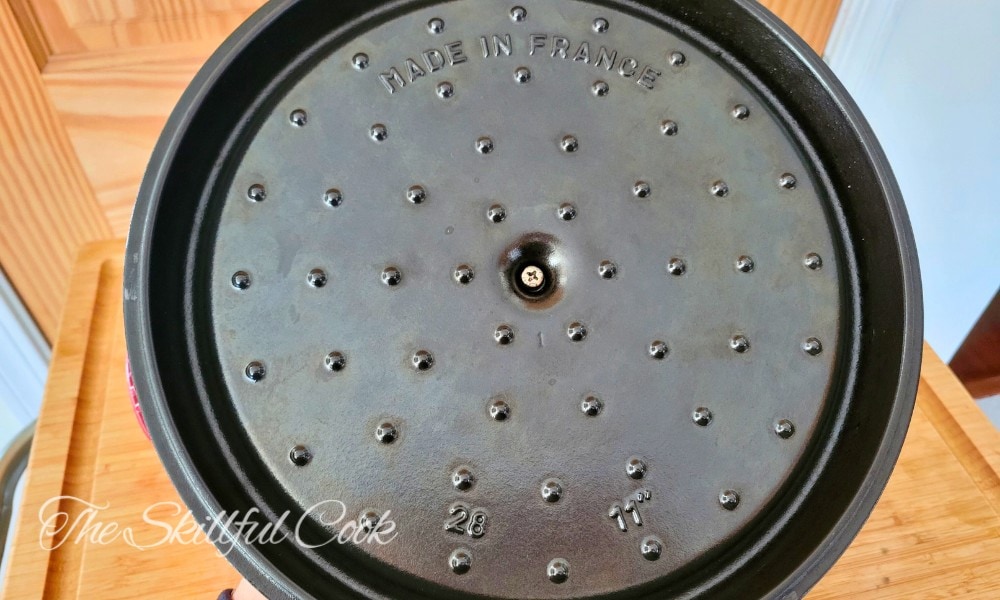
Still, cocottes and Dutch ovens are highly versatile and come in different shapes. So, you may see similar designs, especially in lids. For example, Le Creuset’s cocottes feature mostly flat lids, while the Staub cocotte has recessed lids.
Material
Cast iron is the most common material both French cocottes and Dutch ovens are made of. Raw cast iron is the original material that old Dutch ovens were made of when they entered the US. Dutch ovens can also be made of enameled cast iron or stainless steel, or even aluminum with a nonstick coating.
You may also find cocottes made of earthenware and stoneware, like this Le Creuset mini cocotte set.
Uses
Dutch ovens and cocottes are both versatile cookware pieces with great heat retention that lend themselves to a variety of cooking methods.
They are both ideal for:
Cocottes may be more suited for slow-cooking methods, like stewing, cooking soups, and braising, while the Dutch oven is perfect for frying, searing, and browning thanks to their larger size and surface area. But these applications are never exclusive and you can use both of these vessels for a variety of cooking methods.
Both are oven-safe, and you can use them for stove-to-oven-to-table dishes. They are also compatible with any stovetop, including induction. Since a cocotte is often smaller, it can be more appealing as a serving pot.
Wrapping Up
A cocotte and a Dutch oven are not drastically different. Both are strong and versatile cooking vessels, typically made of raw or enameled cast iron. And while a cocotte tends to be smaller than a Dutch oven, it’s not always the case. Some manufacturers, like Staub, offer cocottes as large as 8 qt.
Do you have a cocotte or Dutch oven? Can you tell them apart? Please share your ideas with us below.

